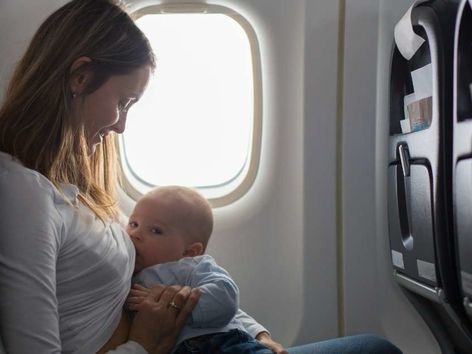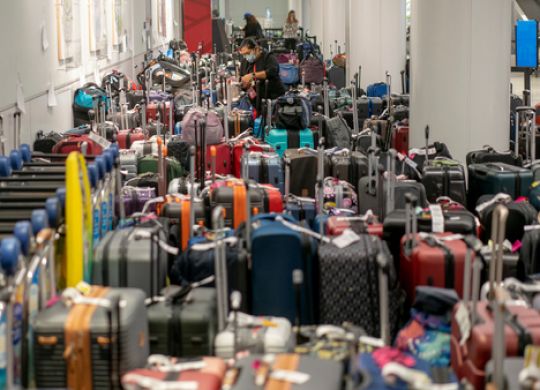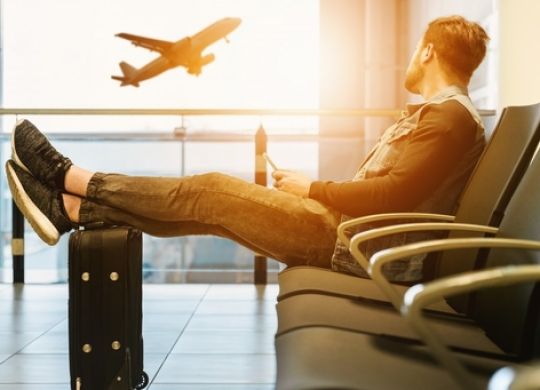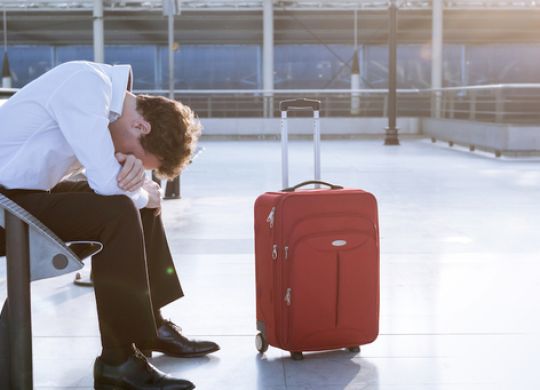Can I travel by plane in a cast: important details

Broke an arm or leg on the eve of your vacation? We don't want to disappoint you, but such an unpleasant situation may disrupt your trip. Find out more about whether passengers with a cast can fly by plane
A broken arm or leg is always unpleasant, and if the injury occurs on the eve of a vacation when a flight is already planned, the situation becomes even more complicated. Many questions arise: is it worth flying if the limb is in a cast, will you be allowed on board, and what conditions must be met?
First of all, you need to familiarize yourself with the rules of the airline you plan to use. It is also important to assess the size of the cast. If your leg is cast only up to the knee, there are usually no problems with boarding. However, if the cast covers the entire limb or from the knee upwards, there may be some difficulties. It will be impossible to bend such a limb, which will require additional space for comfortable seating. In such cases, the airline may offer to purchase one or two more seats to ensure a comfortable flight for you and other passengers.
You can learn more useful tips that will not allow you to get lost at the airport by following the link.
Will a passenger with a cast be allowed on the plane?
Did you know that you may be denied boarding a plane with a fresh cast? Some airlines do not accept passengers who have had a cast placed 2-4 days before the flight. This is due to concern for the health of clients, as this period increases the risk of swelling and circulatory disorders during the flight.
There are different types of plaster constructions, including a plaster cast and a bandage. A plaster cast is usually applied in case of acute injury, and it does not create excessive pressure, which allows you to travel safely by air. On the other hand, a plaster cast can be a problem, especially during long flights. Even in a healthy person, the legs can swell, and the bandage can further increase the pressure on the limb, which can disrupt blood circulation.
In some cases, it may be necessary to cut the plaster cast lengthwise before the flight to reduce pressure. This allows you to loosen or tighten the cast as needed. While some casts need to be replaced after cutting, most can be left in place for the rest of the trip.
Even if the airline does not require it, cutting the cast can be a good idea. Be sure to consult your doctor before flying to ensure your safety and comfort during your trip.
Planning a trip or move abroad? An important part of a successful trip is an insurance policy, as it guarantees high-quality medical care anywhere in the world and can protect you from unnecessary expenses while travelling. You can buy insurance from trusted agents on the Visit World portal.
What do doctors say about flying with a cast?
Flights can pose certain health risks due to pressure changes and possible overloads. Therefore, doctors often do not recommend flying for certain categories of people to avoid possible complications.
The risk group includes:
1. People with a plaster cast;
2. Those who have recently undergone surgery, especially if it involved the introduction of air into closed body cavities;
3. Patients with hemodynamic disorders;
4. Hypertensive patients.
Airlines, together with medical institutions, take precautions to prevent complications that may arise due to edema or prolonged immobilization. The most common problems include circulatory disorders, compression syndrome, and the risk of blood clots.
1. Circulatory disorders: during long flights, passengers remain immobile, which can lead to blood accumulation in the legs and feet. This can cause swelling, especially if the limb is plastered, which impedes blood circulation and increases pressure. If the cast has been applied recently, the risk of edema is even higher, making flying an additional stressor;
2. Compartment syndrome: swelling and increased pressure can lead to a serious condition known as compartment syndrome. This is a condition in which blood circulation is so restricted that muscles and nerves do not receive enough blood. If left untreated, it can lead to irreversible tissue death;
3. Blood clots and deep vein thrombosis (DVT): prolonged immobility during a flight can contribute to the formation of blood clots in the deep veins, leading to serious complications such as pulmonary embolism.
If you have recently had a cast after a surgical procedure, it is important to consider the recommended waiting period before flying. For example, after laparoscopic surgery, you may only need a few days, while after abdominal surgery, you may need up to five days.
Each situation is unique, so be sure to consult your doctor before planning your flight.
Do passengers with a cast need an extra seat?
Depending on the airline's policy, you may need to pay for an extra seat or make special arrangements to accommodate your cast during the flight. A cast is usually placed on one of three parts of the body:
1. Upper extremities: the cast may cover the hand, wrist, or forearm, leaving the fingers free. Some casts cover the elbow, while others are limited to the forearm;
2. Lower extremities: the cast can cover the foot and lower leg, some casts go up to the knee, while others cover the entire leg up to the thigh;
3. Body: A full body cast covers the middle part of the torso and some of the limbs, sometimes even up to the neck or head.
If you only have a cast on your upper limb, you can usually travel in a regular seat. This is also possible with a leg cast if you can bend your knee. If you cannot bend your knee, the airline may offer to purchase an extra seat to help you position your leg comfortably. A seat with extra legroom may also be a suitable option, but you may not be allowed to take a seat near an emergency exit due to special safety requirements.
If none of these options are suitable, you may consider booking a private medical flight or medical escort.
We remind you! Sometimes, due to long layovers, tourists have to spend hours at airports. But you don't have to suffer from boredom all this time, get the most out of the waiting process. Read more about what services airports offer tourists while waiting for flights.
Are you planning to travel or move abroad? An important component of a successful trip is a travel insurance policy, because it guarantees the provision of high-quality medical care in any corner of the world and is able to protect you from unnecessary expenses during the trip. You can buy insurance from verified agents on the Visit World portal.
Products from Visit World for a comfortable trip:
Travel guide for 200 countries;
Legal advice from a local specialist on visa and migration issues;
Travel insurance around the world (please select the country of interest and citizenship to receive services);
Medical insurance all over the world.
We monitor the accuracy and relevance of our information, so if you notice any errors or inconsistencies, please contact our hotline.
Recommended articles
2 min
Air travel
Breastfeeding on an airplane: policies and rules of popular airlines
Most airlines around the world support the right of women to breastfeed during a flight and do not place any restrictions on this process. It is considered a natural and important part of childcare. Find out more about the rules of breastfeeding on the plane of popular airlines
14 Aug. 2024
More details2 min
Air travel
What to do if the airline has lost your luggage: a step-by-step algorithm of actions
If you lose your luggage, it is important to act quickly and notify the airline or airport authorities of this unpleasant situation. Find out more about the step-by-step algorithm of actions and possible solutions in case of lost luggage at the airport
18 Aug. 2024
More details3 min
Air travel
How to escape from boredom on long layovers: a detailed guide for travelers
Sometimes, due to long layovers, tourists have to spend hours at airports. But you don't have to suffer from boredom all this time, and you can get the most out of the waiting process. Find out more about the services airports offer to tourists while waiting for flights
17 Aug. 2024
More details2 min
Air travel
How not to get lost at the airport: useful tips from experienced travelers
Many people have never been on an airplane before. And there's no need to be ashamed of it, it's another interesting new experience that you should prepare for in advance. Find out more useful tips that will prevent you from getting lost at the airport on your next trip
23 Aug. 2024
More detailsAll materials and articles are owned by VisitWorld.Today and are protected by international intellectual property regulations. When using materials, approval from VisitWorld.Today is required.
